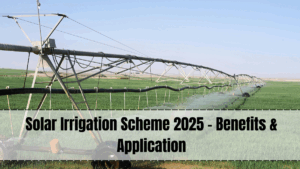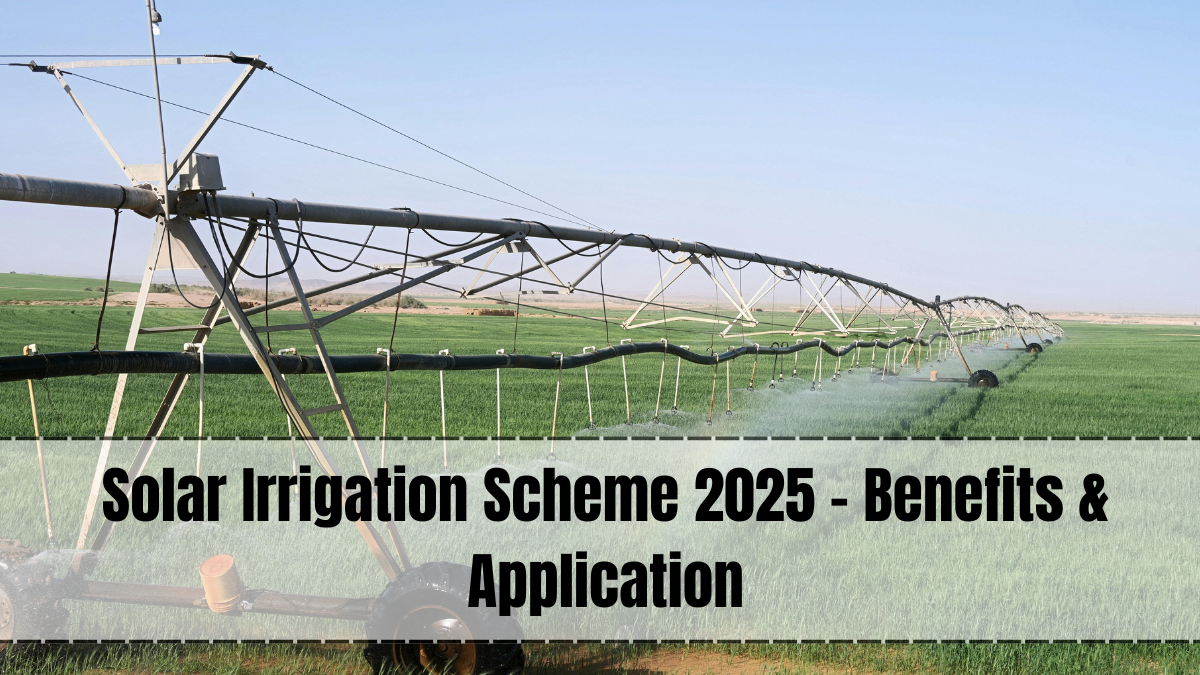The Solar Irrigation Scheme 2025 has revolutionized water management for Indian farmers by providing clean, renewable energy to power water pumps for agriculture. With rising electricity costs and the need for sustainable farming solutions, this scheme delivers affordable irrigation while reducing dependency on diesel and grid electricity. It empowers rural communities, increases crop productivity, and supports environmental conservation.

What is the Solar Irrigation Scheme 2025?
The scheme enables farmers to install solar-powered water pumps at subsidized rates. These pumps draw water from rivers, wells, or borewells using solar panels, ensuring year-round irrigation without fuel costs. The Solar Irrigation Scheme 2025 is part of India’s mission to promote renewable energy in agriculture.
Key benefits include:
-
Zero Fuel Cost: Operates entirely on solar power.
-
Low Maintenance: Durable design with minimal servicing needs.
-
24/7 Water Access: No dependency on grid electricity.
-
Eco-Friendly: Reduces carbon emissions and air pollution.
Government Support & Subsidies
Under Solar Irrigation Scheme 2025, both central and state governments offer financial aid to farmers. Typically, subsidies range from 40% to 70% of the total installation cost, with special provisions for small and marginal farmers. For example, a farmer installing a 5HP solar pump could receive a government subsidy covering the majority of expenses, making it highly affordable.
How Solar Irrigation Works
-
Solar Panels capture sunlight and convert it into electricity.
-
Controller Units regulate the power flow to ensure efficient pumping.
-
Water Pumps draw water for irrigation directly from natural sources.
-
Farmers store the water in tanks or use drip irrigation systems for efficient water use.
Types of Solar Pumps Available
-
Surface Solar Pumps – Ideal for shallow water sources.
-
Submersible Solar Pumps – Suitable for deep water levels.
-
AC/DC Hybrid Pumps – Can run on both solar and grid electricity.
Success Stories from Farmers
Many farmers report saving thousands of rupees annually on fuel and electricity bills. For instance, in Rajasthan, farmers using the Solar Irrigation Scheme 2025 have expanded their cultivation to multiple crops per year due to continuous water supply.
Application Process for Farmers
To apply:
-
Visit the nearest agriculture or renewable energy department office.
-
Submit land ownership documents, Aadhaar, and bank details.
-
Choose pump capacity based on farm size and water needs.
-
Pay your share after subsidy approval, and installation will be scheduled.
Future Impact on Indian Agriculture
The scheme promotes sustainable farming, boosts rural employment, and helps India achieve its renewable energy goals. By 2025, thousands of villages now benefit from solar-powered irrigation, reducing water stress and increasing productivity.
FAQs
Who can apply for the Solar Irrigation Scheme 2025?
Any farmer with cultivable land and a water source can apply.
Is there a limit to the number of pumps a farmer can install?
Yes, usually one pump per registered farmer under the scheme.
What is the lifespan of a solar irrigation pump?
Typically 20–25 years with proper maintenance.
Are these pumps effective during cloudy days?
Yes, hybrid models store energy or use grid power when sunlight is low.
Does the scheme cover drip irrigation equipment?
Some states offer combined subsidies for solar pumps with drip systems.
Click here to know more.
